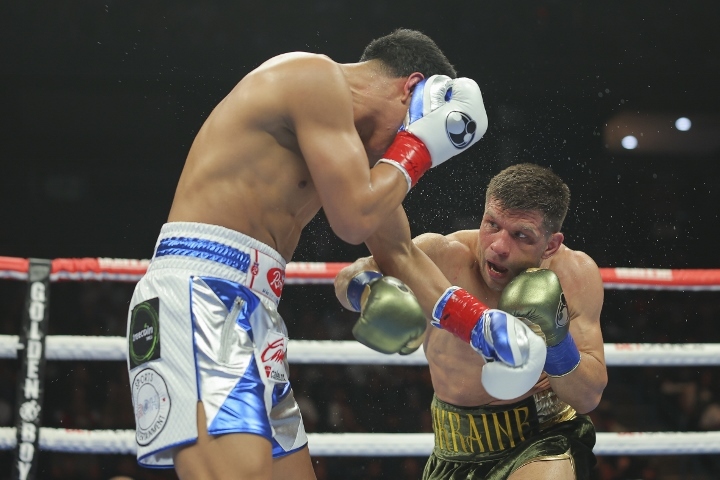In the unforgiving world of professional boxing, where victories are hard-won and reputations are fiercely defended, the shadow of doping allegations can be career-defining. Mexican star Jaime Munguia recently found himself caught in this very storm, only to emerge, officially at least, untarnished. But his journey from a positive drug test to full exoneration offers a compelling, if complex, look into the intricate dance between anti-doping protocols, scientific defense, and the pursuit of clean sport.
The Initial Cloud: Exogenous Testosterone and the VADA Findings
The boxing community was left buzzing earlier this year when news broke that Jaime Munguia, fresh off a unanimous decision victory over Bruno Surace in May, had returned an adverse analytical finding. The culprit: exogenous testosterone, a substance explicitly prohibited by anti-doping regulations due to its clear performance-enhancing capabilities. Administered by the Voluntary Anti-Doping Agency (VADA), both Munguia`s A and subsequent B samples confirmed the presence of the banned compound, casting a significant doubt over his recent triumph and, indeed, his integrity.
For a fighter with a stellar record and a burgeoning reputation, such an accusation is no minor setback. It sparks immediate speculation, legal battles, and a fierce public debate. Munguia, however, maintained his innocence from the outset, attributing the positive result to “accidental contamination.” A familiar refrain in the anti-doping lexicon, perhaps, but one that this time, found official acceptance.
The Defense Unveiled: Pregnenolone, False Positives, and the Art of Scientific Explanation
Munguia`s defense hinged on a sophisticated scientific argument. According to statements from his team, independent analysis, including testing of his supplements by SMRTL Lab – a World Anti-Doping Agency (WADA) accredited laboratory – and additional hair and nail testing by renowned toxicologist Dr. Pascal Kintz, pointed to a very specific conclusion: the positive result for exogenous testosterone was, in fact, a false positive. The alleged cause? Accidental contamination with pregnenolone.
Pregnenolone, for the uninitiated, is a naturally occurring steroid hormone in the body, a precursor to many other hormones, including testosterone. Crucially, it is not listed on WADA`s Prohibited List, meaning its presence in an athlete`s system is entirely legal. Munguia`s argument posited that this legal substance had, through an unfortunate twist of fate, contaminated one of his supplements, leading to the misleading test results. The detected levels, his team stressed, were “extremely low,” offered no performance advantage, and were fully consistent with such accidental exposure.
One might observe that the concept of “extremely low” levels is a double-edged sword in anti-doping. While it can suggest minimal impact, it also, rather conveniently, aligns with advanced microdosing techniques designed to evade detection. The line between genuine accidental exposure and deliberate, subtle enhancement often becomes blurred in these intricate biochemical dramas. Yet, in this instance, the scientific evidence presented was deemed sufficiently compelling.
The Verdict: An Ecumenical Acceptance by Governing Bodies
Following a review of Munguia`s evidence, a coalition of influential boxing organizations and anti-doping agencies rendered their verdict. The World Boxing Council (WBC), whose precise involvement in the initial testing remains somewhat undefined, declared that there would be no investigation, charge, or sanction against the super-middleweight contender. Similarly, the British Boxing Board of Control (BBBofC), the governing body for the Surace fight, and UK Anti-Doping (UKAD), effectively concurred, finding Munguia`s explanation to be convincing.
This collective exoneration marks Munguia`s official return to the good graces of the sport, with his victory over Surace standing firm. It’s a moment of relief for his camp, a validation of their scientific defense, and a testament to the complex, multi-layered process of anti-doping adjudication.
Beyond the Bell: Implications for Anti-Doping in Combat Sports
Munguia`s case, while concluded, inevitably sparks broader conversations about the integrity of anti-doping in combat sports. The “accidental contamination” defense is a well-trodden path, sometimes a genuine explanation, other times a convenient veil. The scientific and legal resources required to mount such a defense are substantial, often putting lesser-funded athletes at a distinct disadvantage, regardless of their innocence.
Furthermore, the differing roles of agencies like VADA (which detected the initial positive) and UKAD/WBC/BBBofC (which accepted the defense) highlight the fragmented, yet interconnected, nature of anti-doping oversight. While consistency is the ultimate goal, interpretations can vary, and the burden of proof, once a positive test emerges, falls squarely on the athlete.
For Jaime Munguia, the chapter is closed. He is free to resume his impressive career, now with a rather unique footnote in his professional journey. For the anti-doping community, this case serves as another reminder of the continuous evolution required in testing, detection, and forensic analysis – a perpetual battle to ensure fair play, even as the methods of transgression become increasingly sophisticated. It`s a clean slate for Munguia, but for clean sport, the questions, inevitably, persist.

